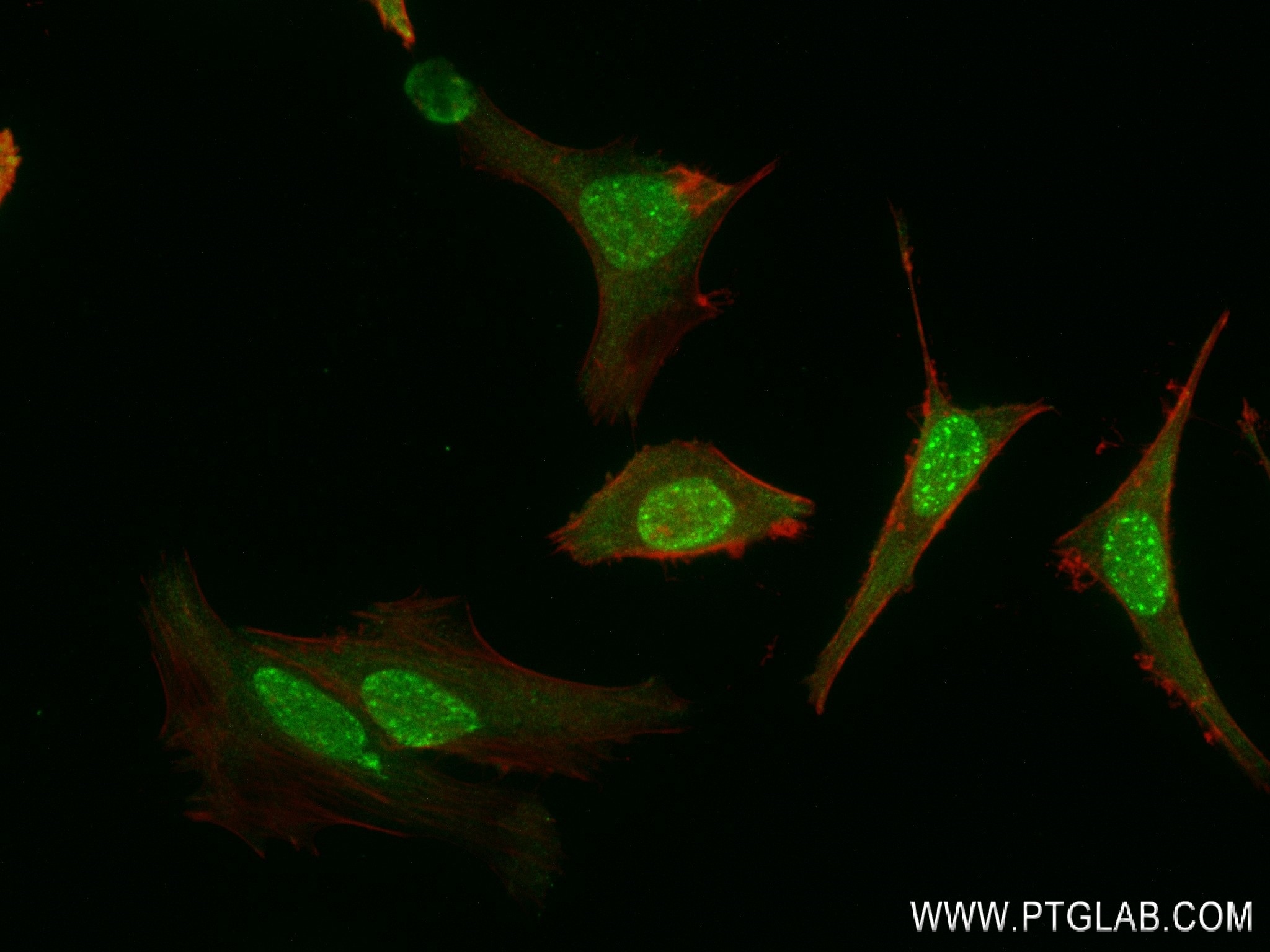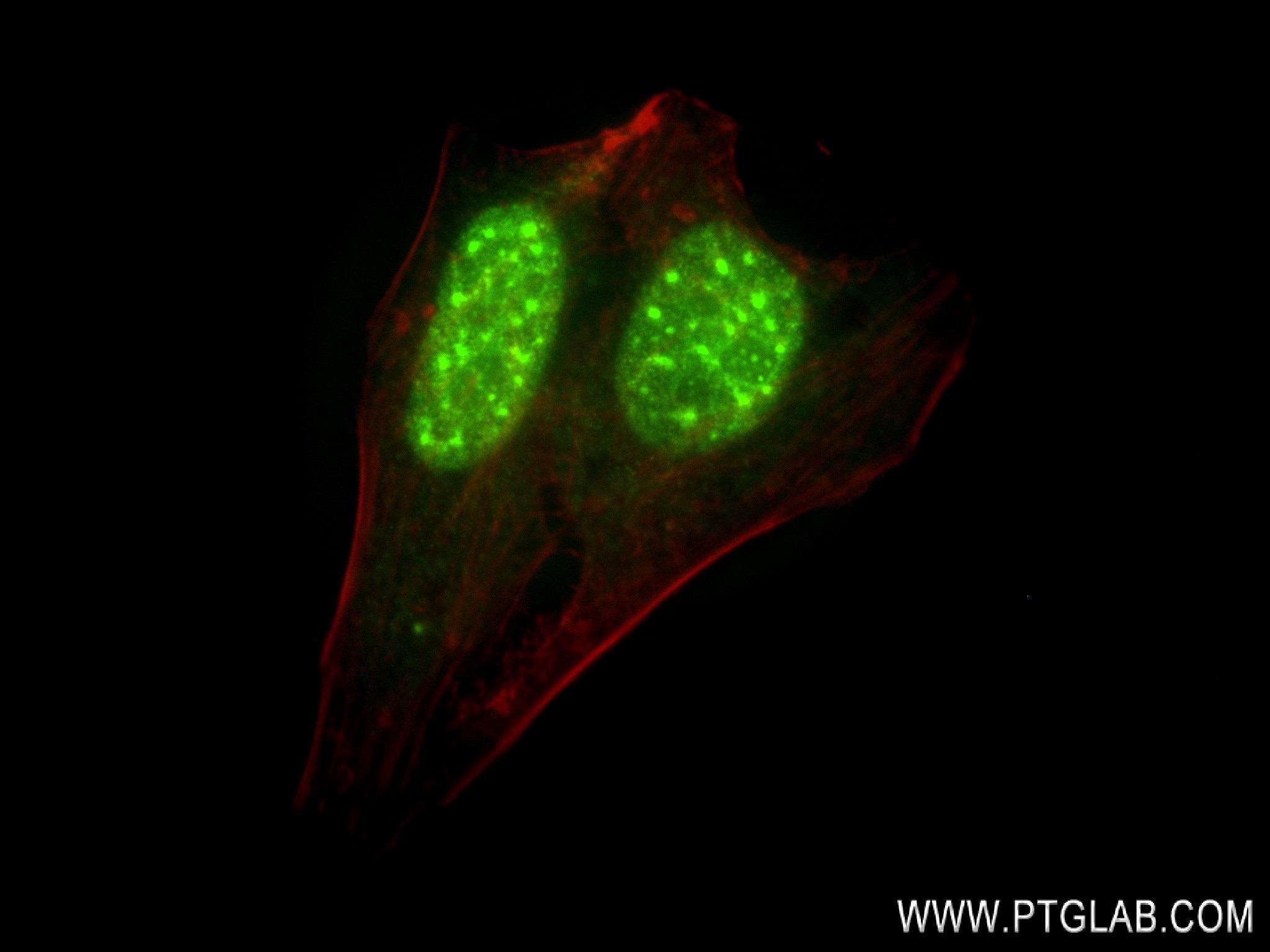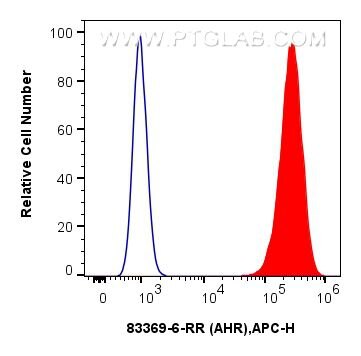Validation Data Gallery
Tested Applications
Recommended dilution
| Application | Dilution |
|---|---|
| It is recommended that this reagent should be titrated in each testing system to obtain optimal results. | |
Product Information
83369-6-PBS targets AHR in IHC, IF/ICC, FC (Intra), ELISA applications and shows reactivity with human samples.
| Tested Reactivity | human |
| Host / Isotype | Rabbit / IgG |
| Class | Recombinant |
| Type | Antibody |
| Immunogen | AHR fusion protein Ag12193 相同性解析による交差性が予測される生物種 |
| Full Name | aryl hydrocarbon receptor |
| Calculated molecular weight | 848 aa, 96 kDa |
| GenBank accession number | BC070080 |
| Gene Symbol | AHR |
| Gene ID (NCBI) | 196 |
| Conjugate | Unconjugated |
| Form | Liquid |
| Purification Method | Protein A purfication |
| UNIPROT ID | P35869 |
| Storage Buffer | PBS only , pH 7.3 |
| Storage Conditions | Store at -80°C. |
Background Information
The aryl hydrocarbon receptor (AhR) is a ligand-activated transcription factor that has been largely regarded as a mediator of xenobiotic metabolism (PMID:18483242). It plays a part role in physiologic activities, including attenuation of the acute phase response, cytokine signaling, T helper (TH) 17 immune cell differentiation, modulation of NF-κB activity, and regulation of hormonal signaling (PMID:20423157,18540824). It also mediates transcription factor sequestering away from a gene promoter or tethering of the AhR to a transcription factor on a promoter. AHR calculated molecular masses differ by <10%, compared with the apparent molecular masses predicted from SDS-PAGE for the two receptors (105 and 95 kDa, respectively). (PMID: 8246913)





